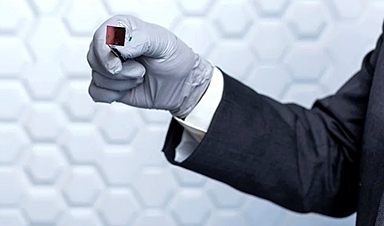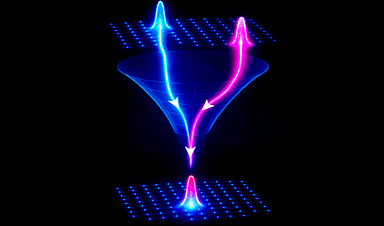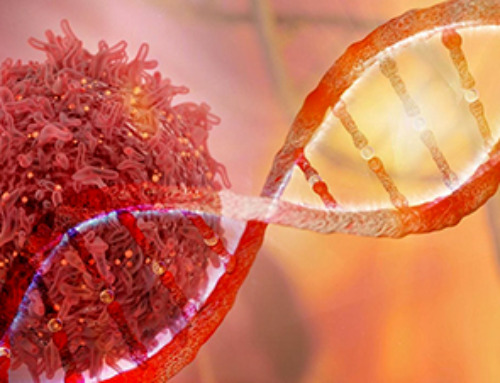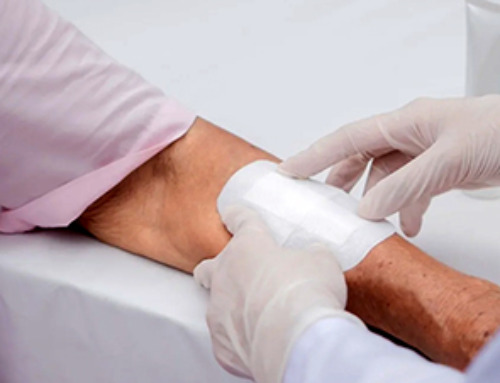Technology developed by researchers at the Indiana University School of Medicine that can change skin tissue into blood vessels and nerve cells has also shown promise as a treatment for traumatic muscle loss.
Tissue nanotransfection is a minimally invasive nanochip device that can reprogram tissue function by applying a harmless electric spark to deliver specific genes in a fraction of a second.
A new study, published in Nature Partner Journals Regenerative Medicine, tested tissue nanotransfection-based gene therapy as a treatment, with the goal of delivering a gene known to be a major driver of muscle repair and regeneration. They found that muscle function improved when tissue nanotransfection was used as a therapy for seven days following volumetric muscle loss in rats. It is the first study to report that tissue nanotransfection technology can be used to generate muscle tissue and demonstrates its benefit in addressing volumetric muscle loss.
Volumetric muscle loss is the traumatic or surgical loss of skeletal muscle that results in compromised muscle strength and mobility. Incapable of regenerating the amount of lost tissue, the affected muscle undergoes substantial loss of function, thus compromising quality of life. A 20 percent loss in mass can result in an up to 90 percent loss in muscle function.
Current clinical treatments for volumetric muscle loss are physical therapy or autologous tissue transfer (using a person’s own tissue), the outcomes of which are promising but call for improved treatment regimens.
“We are encouraged that tissue nanotransfection is emerging as a versatile platform technology for gene delivery, gene editing and in vivo tissue reprogramming,” said Chandan Sen, director of the Indiana Center for Regenerative Medicine and Engineering, associate vice president for research and Distinguished Professor at the IU School of Medicine. “This work proves the potential of tissue nanotransfection in muscle tissue, opening up a new avenue of investigational pursuit that should help in addressing traumatic muscle loss. Importantly, it demonstrates the versatility of the tissue nanotransfection technology platform in regenerative medicine.”
Sen also leads the regenerative medicine and engineering scientific pillar of the IU Precision Health Initiative and is lead author on the new publication.
The Indiana Center for Regenerative Medicine and Engineering is home to the tissue nanotransfection technology for in vivo tissue reprogramming, gene delivery and gene editing. So far, tissue nanotransfection has also been achieved in blood vessel and nerve tissue. In addition, recent work has shown that topical tissue nanotransfection can achieve cell-specific gene editing of skin wound tissue to improve wound closure.
Other study authors include Andrew Clark, Subhadip Ghatak, Poornachander Reddy Guda, Mohamed S. El Masry and Yi Xuan, all of IU, and Amy Y. Sato and Teresita Bellido of Purdue University.
This work was supported by Department of Defense Discovery Award W81XWH-20-1-251. It is also supported in part by NIH grant DK128845 and Lilly Endowment INCITE (Indiana Collaborative Initiative for Talent Enrichment).
News
AI Is Overheating. This New Technology Could Be the Fix
Engineers have developed a passive evaporative cooling membrane that dramatically improves heat removal for electronics and data centers Engineers at the University of California San Diego have created an innovative cooling system designed to greatly enhance [...]
New nanomedicine wipes out leukemia in animal study
In a promising advance for cancer treatment, Northwestern University scientists have re-engineered the molecular structure of a common chemotherapy drug, making it dramatically more soluble and effective and less toxic. In the new study, [...]
Mystery Solved: Scientists Find Cause for Unexplained, Deadly Diseases
A study reveals that a protein called RPA is essential for maintaining chromosome stability by stimulating telomerase. New findings from the University of Wisconsin-Madison suggest that problems with a key protein that helps preserve chromosome stability [...]
Nanotech Blocks Infection and Speed Up Chronic Wound Recovery
A new nanotech-based formulation using quercetin and omega-3 fatty acids shows promise in halting bacterial biofilms and boosting skin cell repair. Scientists have developed a nanotechnology-based treatment to fight bacterial biofilms in wound infections. The [...]
Researchers propose five key questions for effective adoption of AI in clinical practice
While Artificial Intelligence (AI) can be a powerful tool that physicians can use to help diagnose their patients and has great potential to improve accuracy, efficiency and patient safety, it has its drawbacks. It [...]
Advancements and clinical translation of intelligent nanodrugs for breast cancer treatment
A comprehensive review in "Biofunct. Mater." meticulously details the most recent advancements and clinical translation of intelligent nanodrugs for breast cancer treatment. This paper presents an exhaustive overview of subtype-specific nanostrategies, the clinical benefits [...]
It’s Not “All in Your Head”: Scientists Develop Revolutionary Blood Test for Chronic Fatigue Syndrome
A 96% accurate blood test for ME/CFS could transform diagnosis and pave the way for future long COVID detection. Researchers from the University of East Anglia and Oxford Biodynamics have created a highly accurate [...]
How Far Can the Body Go? Scientists Find the Ultimate Limit of Human Endurance
Even the most elite endurance athletes can’t outrun biology. A new study finds that humans hit a metabolic ceiling at about 2.5 times their resting energy burn. When ultra-runners take on races that last [...]
World’s Rivers “Overdosing” on Human Antibiotics, Study Finds
Researchers estimate that approximately 8,500 tons of antibiotics enter river systems each year after passing through the human body and wastewater treatment processes. Rivers spanning millions of kilometers across the globe are contaminated with [...]
Yale Scientists Solve a Century-Old Brain Wave Mystery
Yale scientists traced gamma brain waves to thalamus-cortex interactions. The discovery could reveal how brain rhythms shape perception and disease. For more than a century, scientists have observed rhythmic waves of synchronized neuronal activity [...]
Can introducing peanuts early prevent allergies? Real-world data confirms it helps
New evidence from a large U.S. primary care network shows that early peanut introduction, endorsed in 2015 and 2017 guidelines, was followed by a marked decline in clinician-diagnosed peanut and overall food allergies among [...]
Nanoparticle blueprints reveal path to smarter medicines
Lipid nanoparticles (LNPs) are the delivery vehicles of modern medicine, carrying cancer drugs, gene therapies and vaccines into cells. Until recently, many scientists assumed that all LNPs followed more or less the same blueprint, [...]
How nanomedicine and AI are teaming up to tackle neurodegenerative diseases
When I first realized the scale of the challenge posed by neurodegenerative diseases, such as Alzheimer's, Parkinson's disease and amyotrophic lateral sclerosis (ALS), I felt simultaneously humbled and motivated. These disorders are not caused [...]
Self-Organizing Light Could Transform Computing and Communications
USC engineers have demonstrated a new kind of optical device that lets light organize its own route using the principles of thermodynamics. Instead of relying on switches or digital control, the light finds its own [...]
Groundbreaking New Way of Measuring Blood Pressure Could Save Thousands of Lives
A new method that improves the accuracy of interpreting blood pressure measurements taken at the ankle could be vital for individuals who are unable to have their blood pressure measured on the arm. A newly developed [...]
Scientist tackles key roadblock for AI in drug discovery
The drug development pipeline is a costly and lengthy process. Identifying high-quality "hit" compounds—those with high potency, selectivity, and favorable metabolic properties—at the earliest stages is important for reducing cost and accelerating the path [...]





















